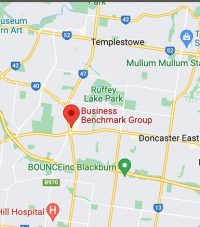Owning a trades business can be immensely rewarding, but it also comes with its fair share of financial complexities. One of the most significant challenges you may face is understanding whether the time and effort you invest in your business truly pays off. This is what I call the “Hourly Rate Identity Crisis.” In this post, we’ll explore this issue in-depth and provide actionable advice to help you maximize your earnings by making strategic, informed decisions about your labour costs and pricing strategies.
Understanding Your Investment
Before diving into solutions, it’s essential to assess the current state of your business. This involves taking a hard look at your financial inputs and returns. Are you working long hours without seeing a proportional increase in your income? If so, you’re likely experiencing the Hourly Rate Identity Crisis. This occurs when there’s a disconnect between the effort you put into your business and the financial rewards you reap.
To start, ask yourself these questions:
- How much do I charge for my time per hour?
- How many hours do I work in a week?
- What was my take-home pay last month?
These questions will help gauge whether you are pricing your services appropriately and managing your time efficiently.
Identifying the Pitfalls
Many trades business owners calculate their hourly rates based solely on market standards and competitor prices, often needing to consider their unique costs and the quality of service they provide. This can lead to undercharging for high-quality services or overworking to compensate for lower rates.
Moreover, not all hours worked are billable, and failing to account for this can significantly distort your perception of your hourly earnings. Administrative tasks, travel time, and job preparation often consume hours that only some clients directly pay.
Practical Steps to Resolve the Crisis
1. Reevaluate Your Hourly Rate
Calculate your ideal hourly rate by considering all business expenses, desired profit margins, and the actual working hours (including non-billable hours). This might mean increasing your rates, but with the justification of your expertise, the quality of your work, and the actual cost of running your business.
2. Focus on High-Value Activities
Identify the tasks that directly contribute to your income, such as job completion and client consultations, and find ways to minimize time spent on low-value activities. Consider outsourcing or automating administrative tasks like scheduling, invoicing, and customer service.
3. Build a Reputation Around Your Key Services
Instead of trying to be a jack-of-all-trades, focus on your main areas of expertise. This helps build a brand that attracts higher-paying projects and clients looking for specialists. Define your #1 Big Outcome — the main benefit you provide that clients cannot get elsewhere — and use it to market your business.
4. Regularly Review Your Business Performance
Set aside monthly time to review your hours worked, income generated, and client feedback. This will help you adjust your strategies and ensure you remain on track to meet your financial goals.
Conclusion
Escaping the Hourly Rate Identity Crisis requires a clear understanding of your business operations and the courage to change your pricing and business model. By taking control of how you value your time and expertise, you can transform your trades business into a more profitable and satisfying venture. Remember, the goal is to work smarter, not more complex, and to ensure that every hour you invest in your business builds towards more excellent financial stability and success.







